Connecting to the future : Lowering Methane Emissions from Rice Production Supporting Farmers and Decarbonization
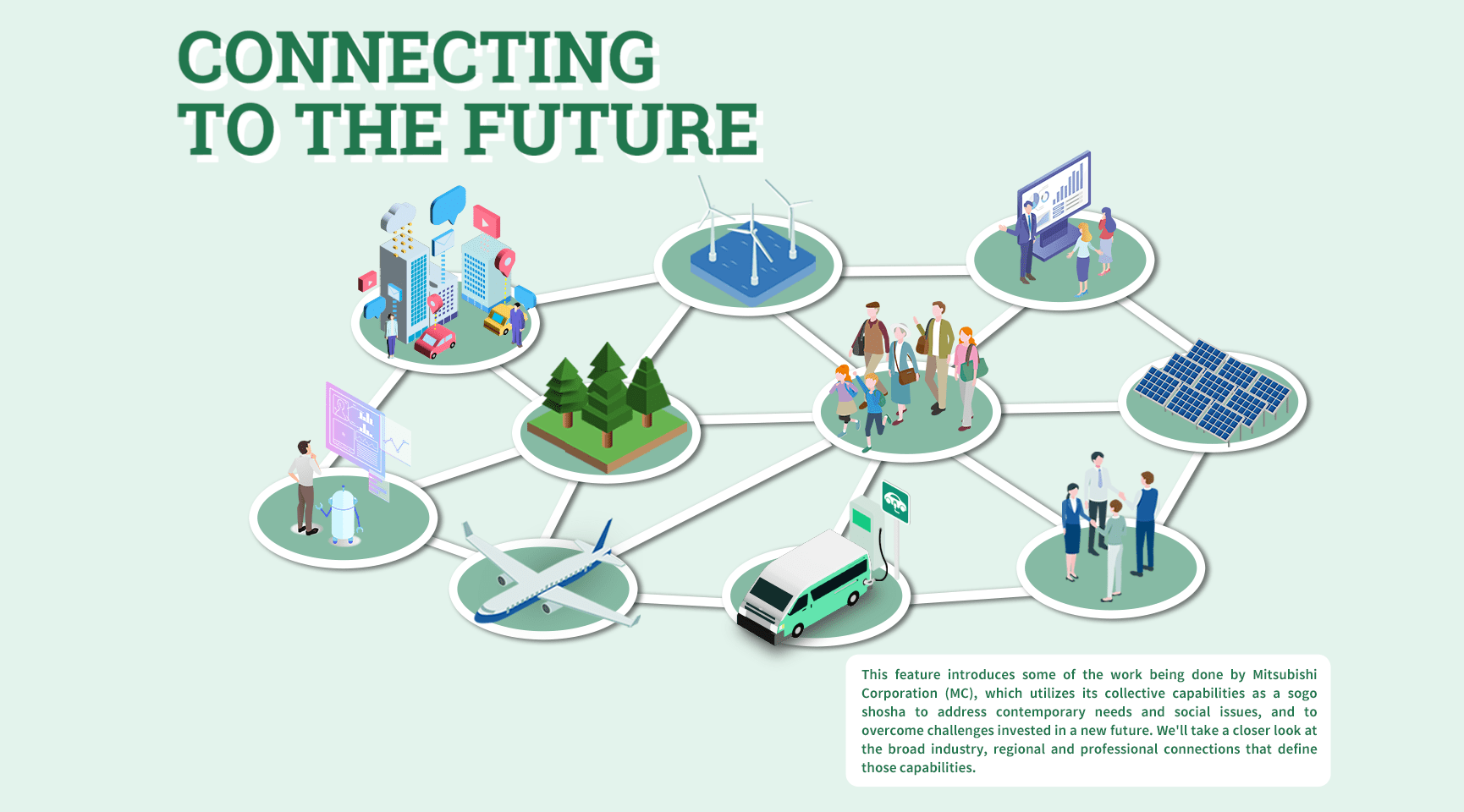
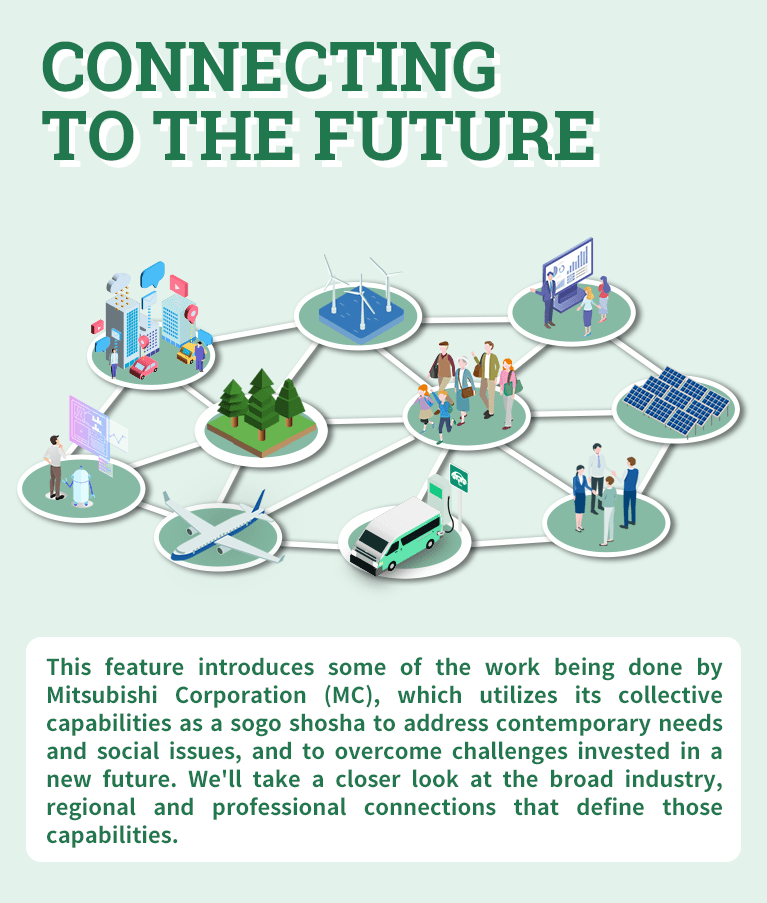
Teaming with Farmers to Decarbonize vol.2
Lowering Methane Emissions from Rice Production
Supporting Farmers and Decarbonization
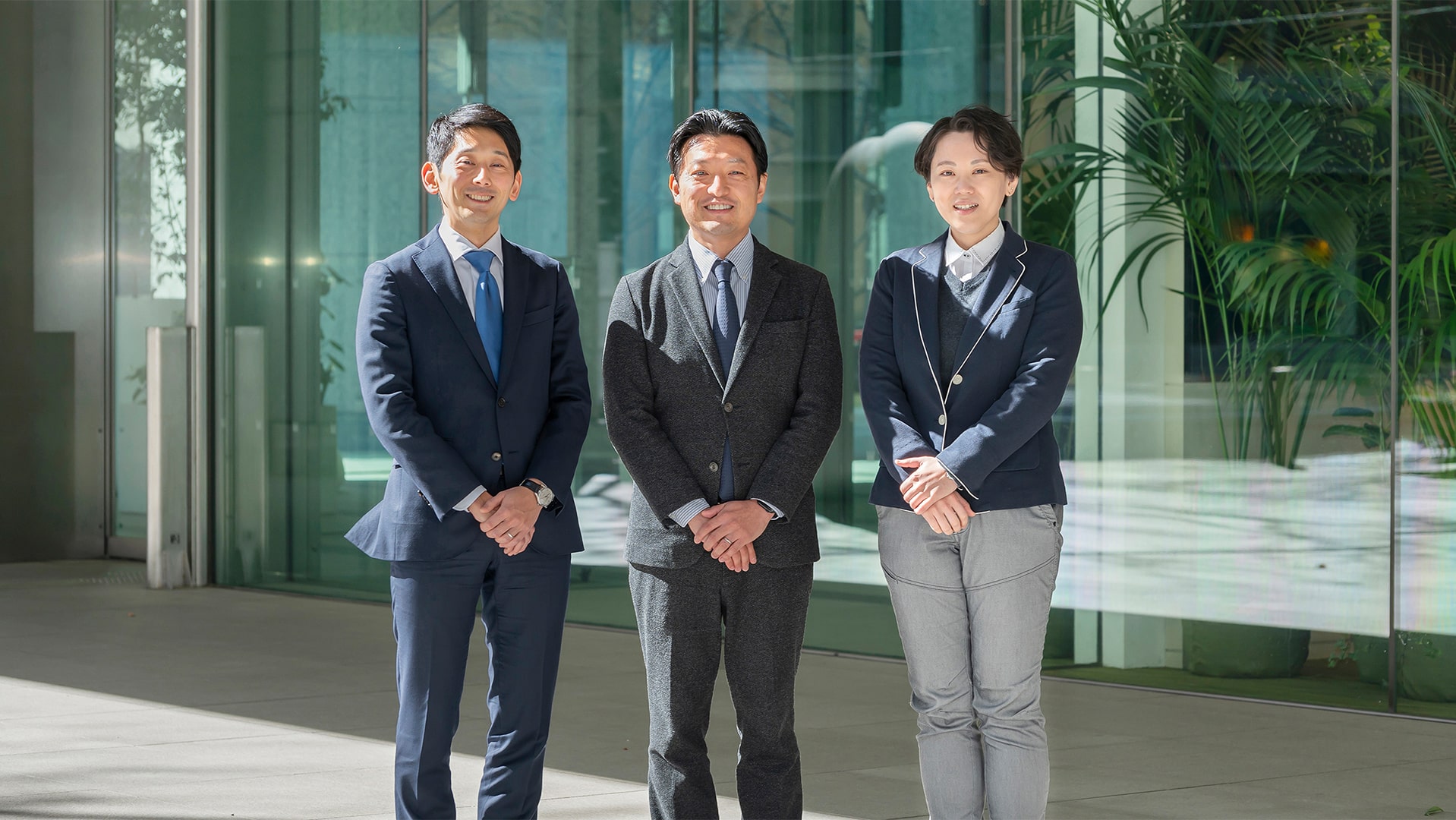
MC is promoting a climate-action project that aims to reduce methane emissions from rice paddies through the issuance of carbon credits. It promises to not only further the company's decarbonization efforts, but also provide rice farmers with a new source of income. Part 2 of our series on the shosha's joint decarbonization efforts with farmers focuses on this rice-paddy-methane-reduction project. GLOBE+ Editor in Chief Kazuhiro Sekine asks three pros from MC who are involved in the project to share their thoughts on it and expectations for its future development.
- Discussion Participants
-
Kengo Morimoto (Business Incubation Unit, Food Industry Group CEO Office)
Shunya Hiroshima (Business Incubation Unit, Food Industry Group CEO Office)
Minami Yamashita (Strategy Planning Team, Agricultural Produce & Dairy Products Dept., Farm, Dairy & Meat Produce Div.)
- Interviewer
- Kazuhiro Sekine (GLOBE+ Editor in Chief)
The Unexpected Connection Between Rice Growing and Methane
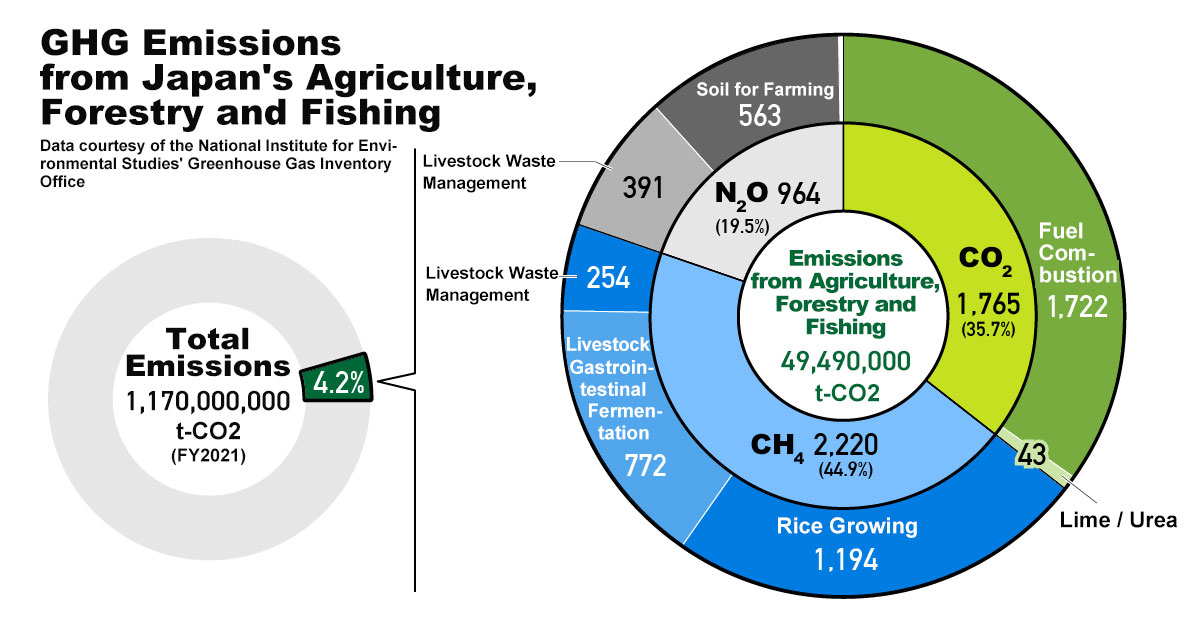
*As atmospheric heat traps, CH4 (methane) and N2O (nitrous oxide) are respectively 25 times and 298 times more potent than CO2 (carbon dioxide).
*Although GHG emissions from these sectors include CH4 and N2O from burned fuel and crop residue, the amounts of those gases are very small and therefore not included in the total figures. For this reason, the totals shown in the separate breakdowns may not be exactly the same.
—— Let me begin by asking whether it's true that rice growing is a source of GHG emissions.
Hiroshima According to Japan's Ministry of Agriculture, Forestry and Fisheries (MAFF), our country's GHG emissions reached almost 1.2 billlion tons in fiscal year 2021. About 50 million tons, or 4% of that comes from the agriculture, forestry and fishing sectors, and approximately one quarter of those sectors' emissions (around 11.94 million tons) comes from rice cultivation. (All figures CO2 equivalent) In some countries, most of the GHGs generated by these sectors come from livestock gastrointestinal fermentation, which is a fancy way of saying gas passed by cows and other domesticated farm animals. Japan is different though, as most of our emissions from these sectors come from rice production. Methane accounts for 16% of GHGs, which is the second largest percentage after CO2, plus its impact on trapping heat in our atmosphere is roughly 25 times greater than CO2. In other words, if our aim is to lower GHG emissions, reducing one ton of methane is as effective as reducing 25 tons of CO2.
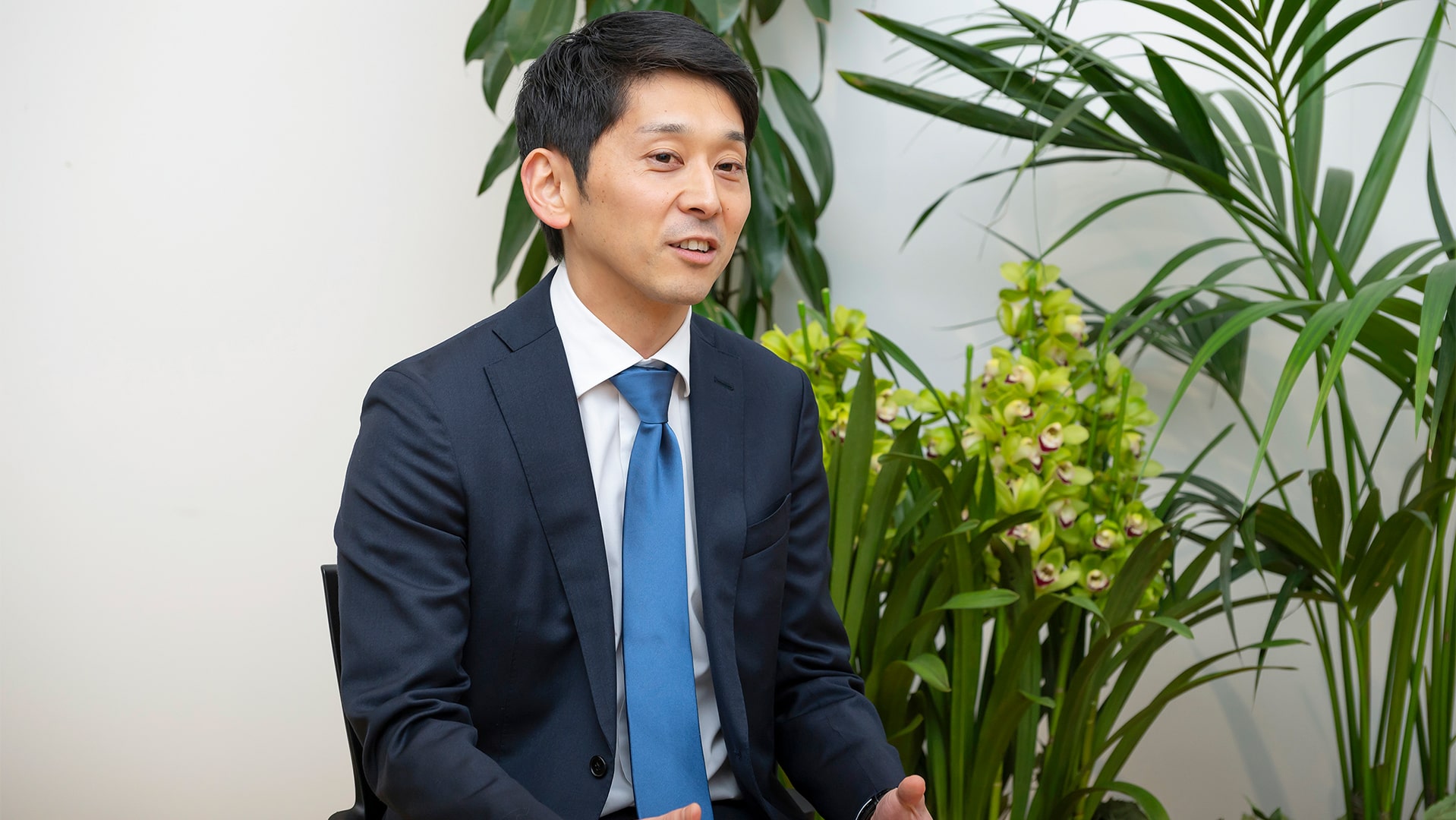
—— Why does growing rice produce methane?
Hiroshima Rice farmers use a variety of organic materials to prepare their rice paddies, including manure fertilizers, compost, rice straw and so on.Certain type of microorganisms in the soil produce methane when they break down these materials. While those bacteria cannot thrive in the oxygen-rich environement, they are much more active in the soil of flooded paddy fields since the oxygen is scarce. If the water layer remains, it will not only result in greater methane emissions, but also inhibit healthy root function and lead to excessive offshoot, which is when lateral shoots branch off the main root stems. This damage lowers rice yields and quality, so in most cases, rice farmers drain the water from their paddies over a period of one to two weeks in June or July, which is around the time that the rice begins to develop. This drainage is a normal part of rice cultivation, and it has always been done to ensure the best possible rice harvests. In recent years, researchers have discovered that it also helps to reduce the paddies' GHG emissions.
—— So drainage impacts methane emissions. That's interesting.
Hiroshima Yes. Japan's National Agriculture and Food Research Organization (NARO) has released data showing that prolonging the mid-season drainage periods during wet-land rice harvests by seven days can reduce methane emissions from the paddies by as much as 30%. Since March 2023, Japan's J-Credit scheme* has registered the methodology of extending the rice-paddy drainage period by more than seven days over at least the most recent two-year average.
* J-Credit Scheme
The J-Credit Scheme is a carbon-credit system that has been run jointly by Japan’s Ministry of Economy, Trade and Industry, Ministry of the Environment, and Ministry of Forestry, Agriculture and Fisheries since 2013. Under the scheme, the government certifies the amounts of CO2 and other GHG emissions that are reduced or removed through efforts to conserve energy, use renewables, manage forests and otherwise protect our natural resources and environment. Companies that purchase credits can add them to their own GHG emission reductions.
—— Will the rice grow properly if farmers extend the drainage period?
Hiroshima NARO has run field tests in several prefectures across Japan, the results of which indicate that an extension of roughly seven days will have a negligible impact on rice yields and quality. In fact, the data suggests that short extensions may actually help to slightly improve rice quality. More data and know-how will be collected by each region in the coming years, which means that future harvest forecasts should be even more precise.
System for Creating Carbon Credits Through Extended Rice-paddy Drainage Periods
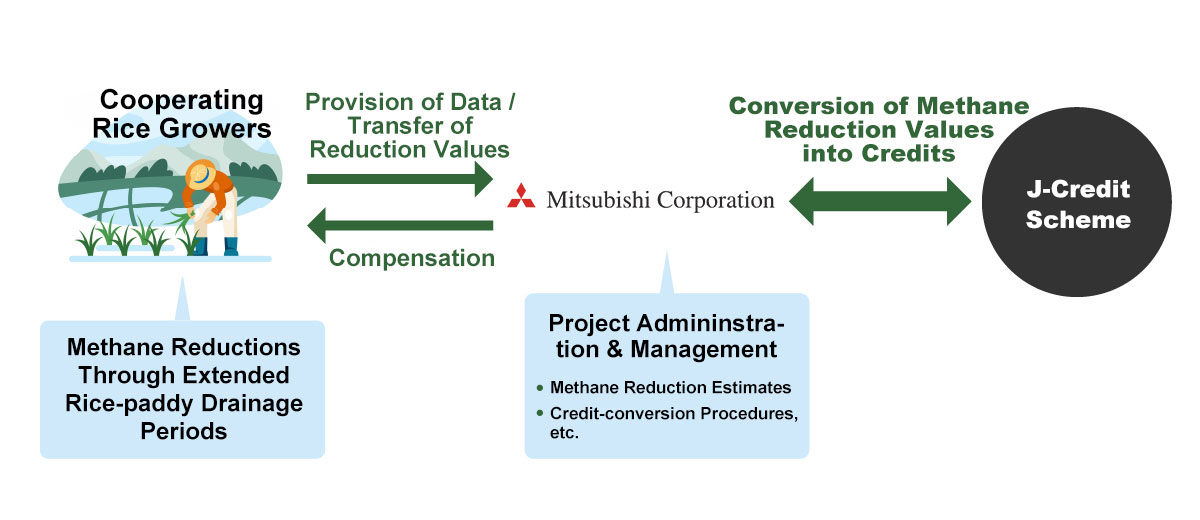
—— Please tell me about this methane-reduction project that MC is engaged in.
Yamashita
Sure. The project-member rice growers take the first step by extending their rice-paddy drainage periods. MC then uses the data reported by the growers to calculate their methane reductions and inititiates the related administrative and management procedures. After verification by a third party, the reductions are approved by the J-Credit certification committee and the carbon credits are issued. We then pays the compensation for the reduction values to the growers according to the amount of credits issued.
Morimoto
MC began looking for opportunities to address rice-paddy methane emissions about three years ago. We registered and launched this project in June 2023, in conjunction with the approval of drainage-period extensions methodology under the J-Credit scheme in Marh 2023.
Actually, we're now just preparing to present our project's first fiscal-year results to the J-Credit Scheme's secretariat. Provided that we get the certification committee's approval, we expect our first fiscal year's J-Credits to be issued in mid March.*
* This interview was conducted in February 2024
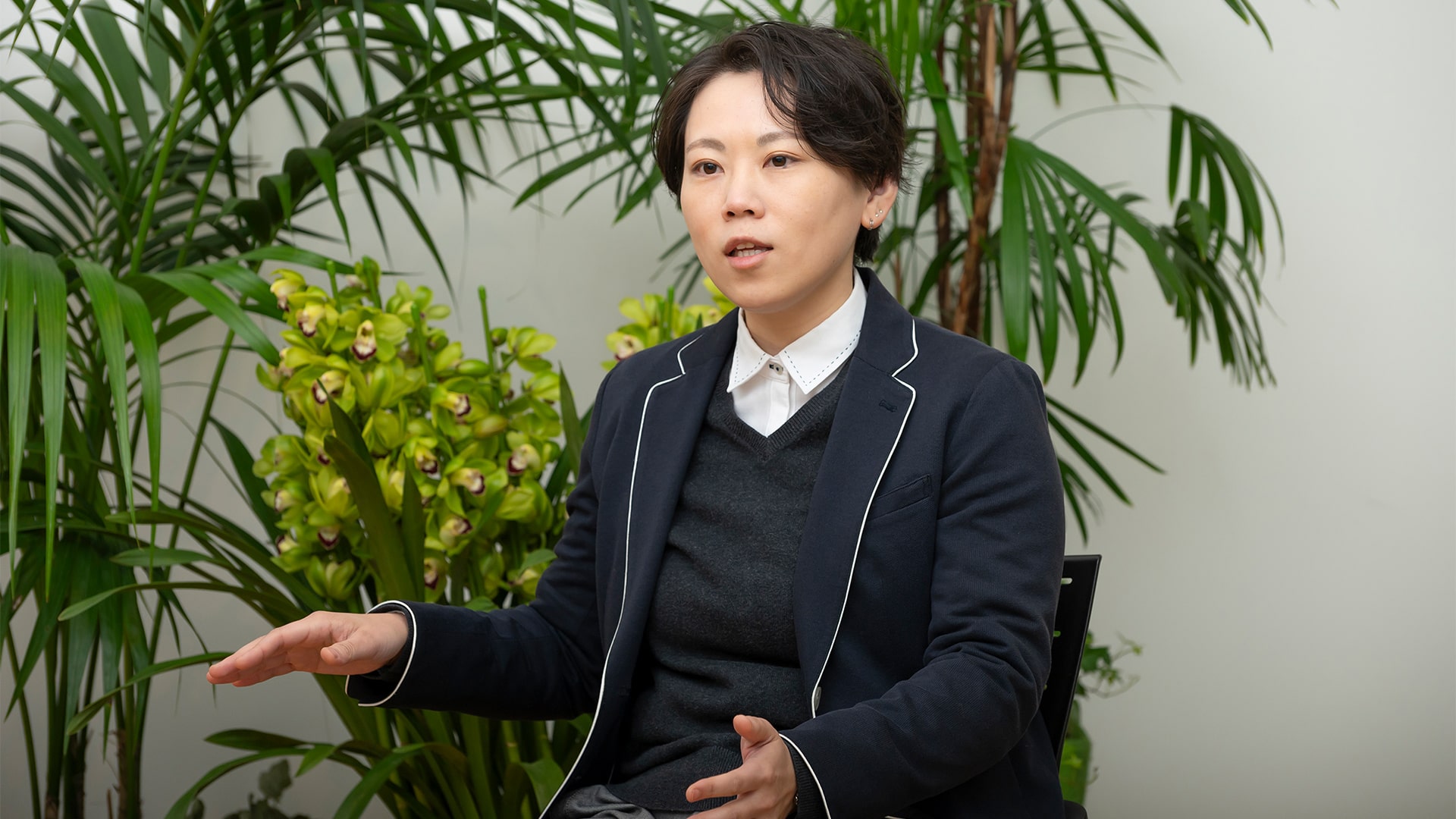
—— Speaking of secretariats, that seems to be the role that MC is playing in this reduction project. Is it also possible for the cooperating farmers to get their own credits issued?
Hiroshima Even if the growers are very aware of environmental issues and keen to play a more proactive role, I think it would be very difficult for them to get the J-Credits issued without our help. This is because things like project registration and credit-conversion applications are quite costly, as third parties have to be engaged to draw up reduction-activity plans and verify results. There's a lot of complex paperwork involved as well. Even if growers are incentivized by carbon credits, the reality is that it would be very expensive for them to try and acquire them on their own. Yamashita We've had representatives from both the cooperating growers and companies engagged in farming tell us that they had given up trying to do something like this on their own, and that they'd been waiting for someone to launch a project like ours. As project secretariat, MC performs the role of credit "developer," which supports efforts by environmentally aware growers to extend their rice-paddy drainage periods.
Where's the Interest for a Non-grower Like MC?
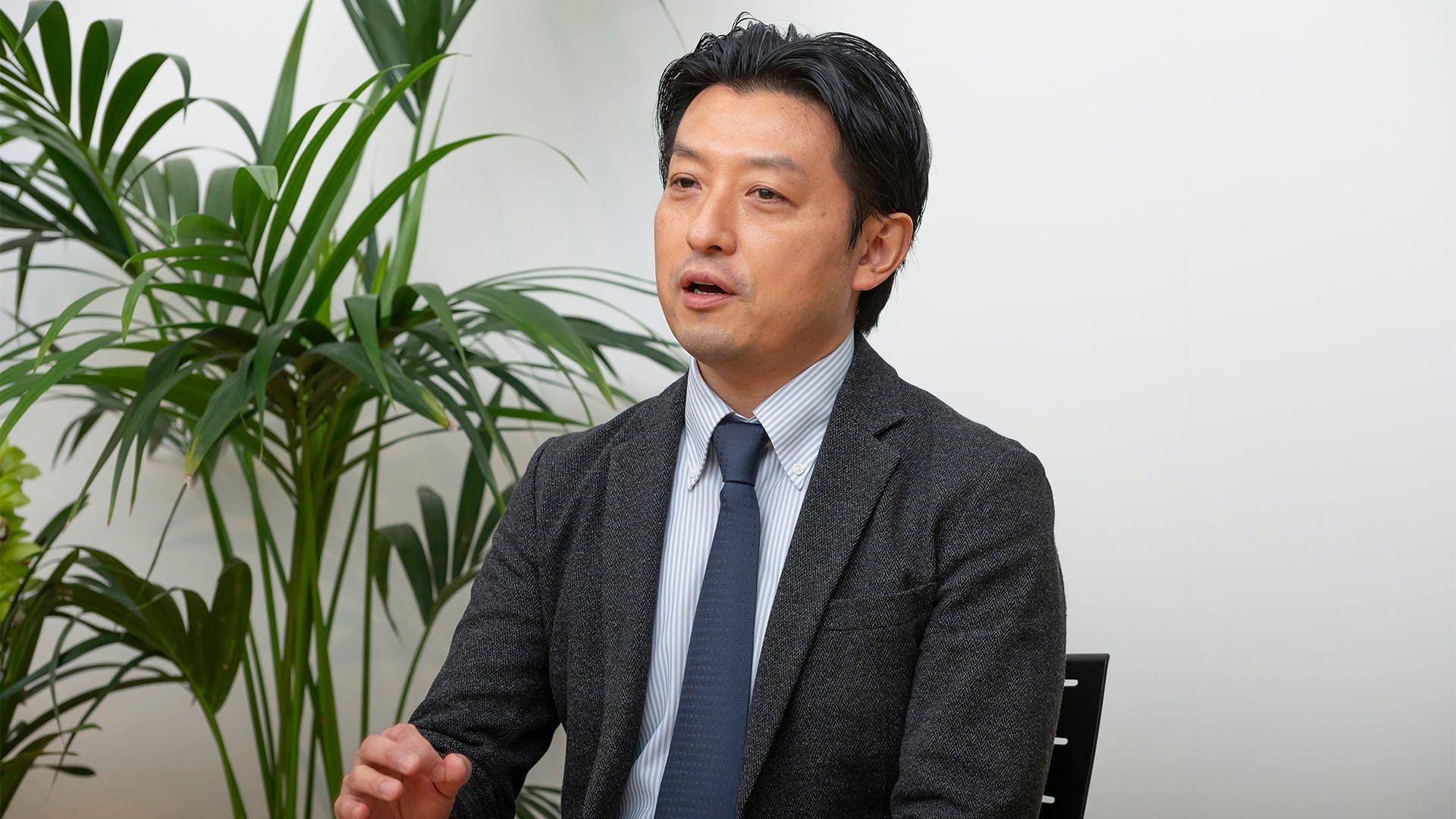
—— Why did MC get involved in this project to begin with?
Hiroshima MC and its group companies have been working steadily on GHG reduction methods for quite some time, and our activities in that space include introducing machinery that is very efficient at conserving energy, reviewing logistics practices, and so on. Despite all those efforts, we realized that so much more needed to be done to achieve net zero, so we began looking for ways to contribute in the food industries, even if it meant not getting directly involved in the businesses. We don't grow rice, but we knew we would be capable of helping rice growers lower their methane emissions, and we figured that doing so might even lead to new business opportunities in the future. Morimoto Broadly speaking, MC is obligated to reduce primary-industry GHG emissions, because its businesses span those supply chains. We've taken the liberty to speak with a wide range of players in those chains, including producers, wholesalers, restaurateurs, supermarket and convenience store operators, and so on, all of whom have expressed interest in raising awareness of their eco-friendly products and services, in other words, those designed to help us achieve net zero. Having realized that this is a chance for MC to show its stuff, our entire team is focused on this challenge and working hard to develop solutions.
—— In your opinion, how is this project significant to MC?
Morimoto This project will also help MC create environmental and societal value. GHG emissions from rice growing account for no more than 1% of Japan's total emissions, so the scale of this business will never be that great; but even so, taking that first step into unknown territory is hugely significant.
Branding Methane Reduction Creating New Value in Rice
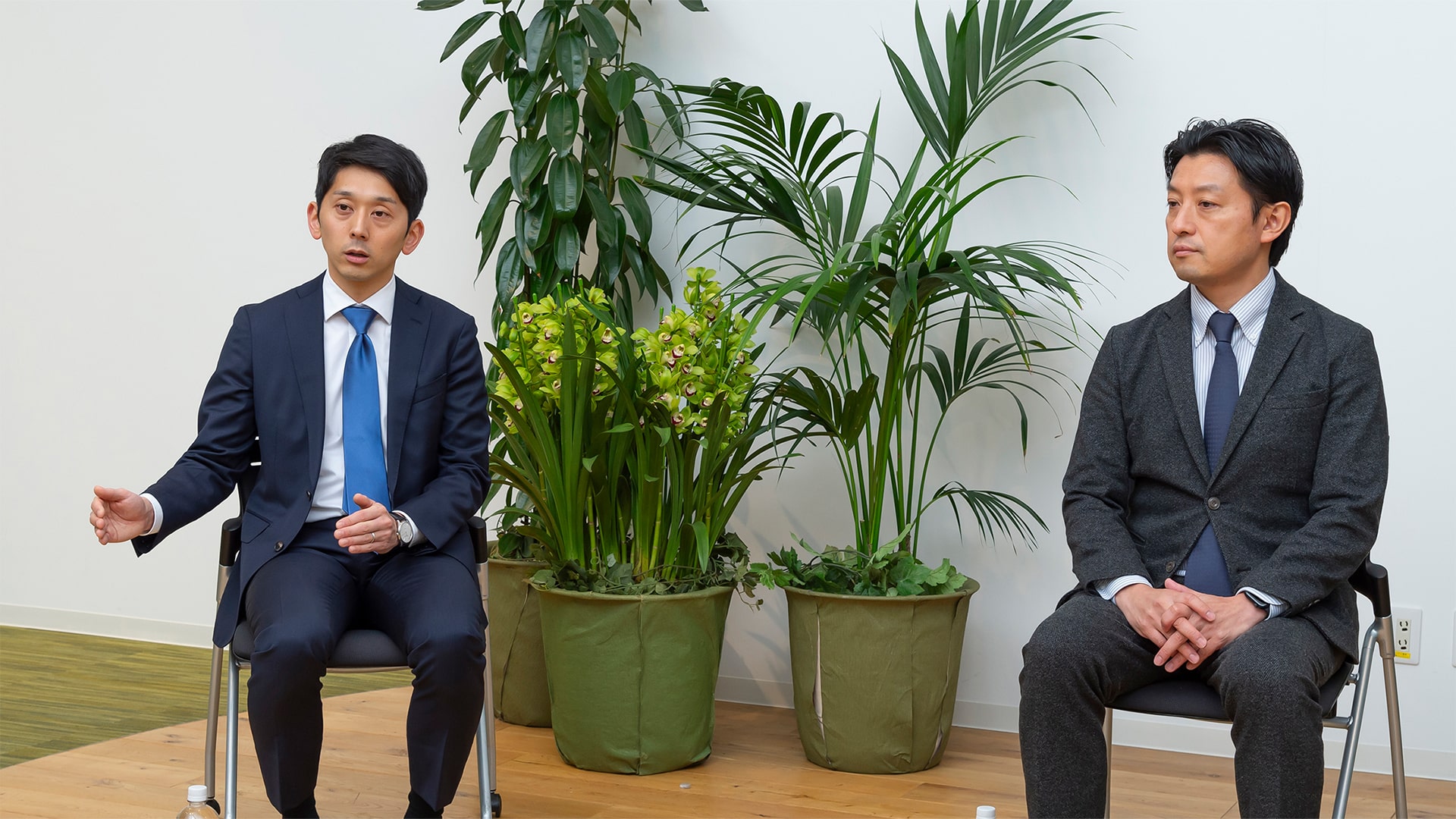
—— What actions is MC taking, other than creating these credits?
Yamashita MC has close ties with myriad types of enterprises, both here in Japan and around the world, and they include group companies engaged in food logistics, wholesales, and so on. Our intentions are to leverage those ties, not only to create credits, but also to offer diverse solutions along the full breadth of the rice supply chain, from purchasing and distribution to sales. One such MC Group company is Mitsuhashi, a rice producer whose manufacturing and sales operations include everything from polishing the grains to making pre-cooked rice products. Taking advantage of a demonstration project undertaken by MAFF to gauge GHG reduction rates, Mitsuhashi is actually selling rice that's grown using environmentally friendly methods, and those sales are generating economic value from environmental value.
—— Handling everything up to sales is certainly what one would expect of a sogo shosha. What problems or concerns have you had to deal with?
Morimoto The fact that the rice is grown using methods to reduce GHGs is not a good enough claim to get consumers to buy the rice at a higher price, even if you stress how it benefits our natural environment. Obviously, the cost of decarbonization must be borne by society as a whole, so I think in the future, products that help lower GHG emissions must be made with the go-to standards. But that's also difficult to do. Hiroshima I agree. I think it will be important for players like MC, who bridge different industries, to get everyone in the supply chain to see the value in that, which means tailoring our approaches appropriately from upstream to downstream. Another key step will be raising everyone's awareness of brand marketing. With ties to so many different industries and businesses, MC must do everything in its power to fulfill those obligations.
Leveraging Digital Technologies to Boost Efficiency the Key to Growth
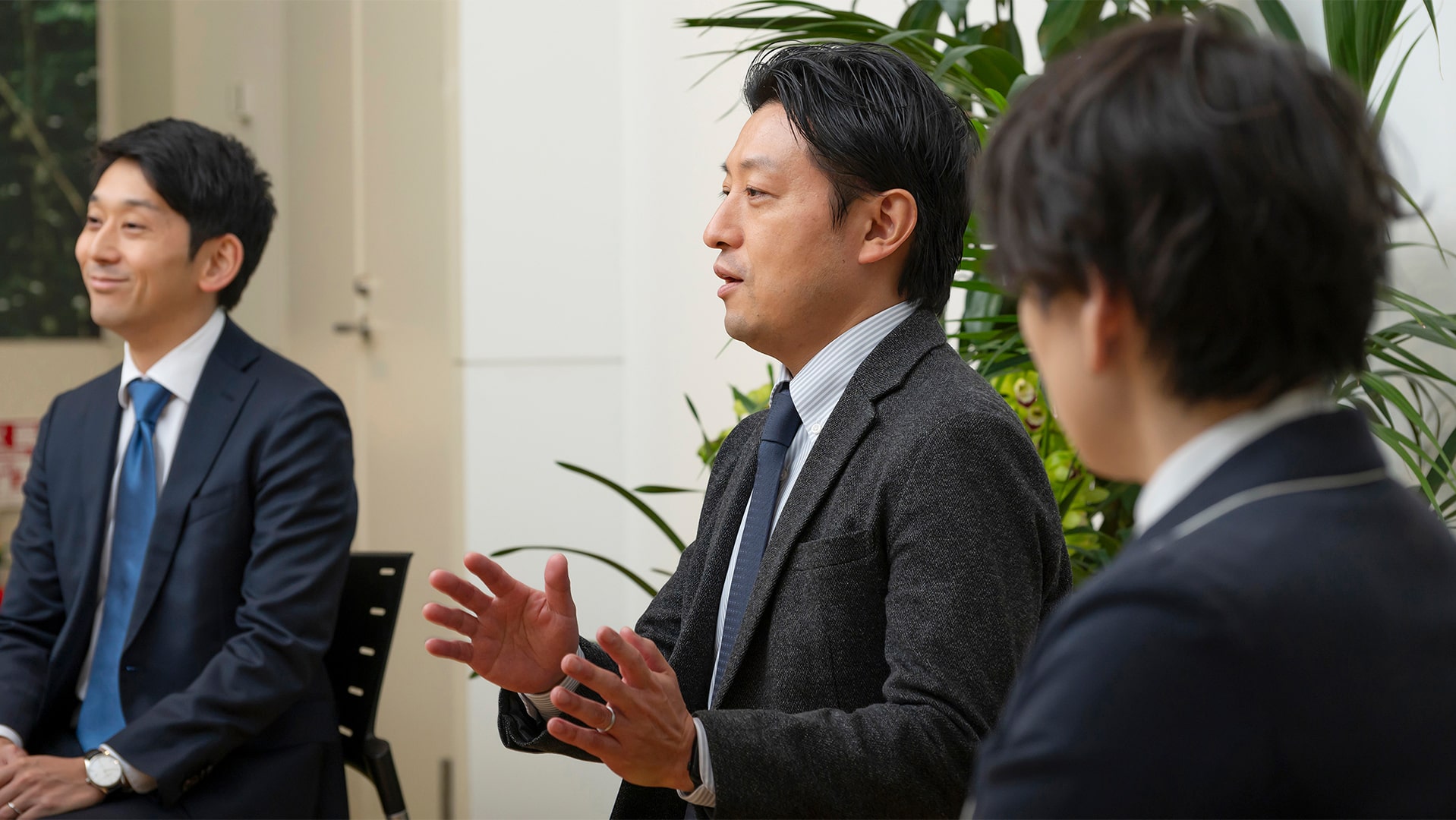
—— I understand that you're recommending the use of digital tools in this project. Tell me about that.
Yamashita The "Agri-note" farmer support system is an app that farmers can use to record, collect and share various data to improve their operations. It was developed by the MC Group company WaterCell, which also runs the service, and its user-friendliness has been praised by farmers. Project participants are not required to use Agri-note, but we recommend it because it makes it easier to register the work done to extend drainage periods. Morimoto With new generations of farmers coming up, corporations getting involved in farming, and other changes taking place on the front lines of Japanese agriculture, gradual advances are being made in the industry's tech, including this farming support app, smart farm machinery, and so on. As MC makes more progress with this project to lower rice-paddy methane emissions, it will need to take advantage of those advances to ensure that both the growers and the secretariat operate efficiently.
—— Today we've been talking about rice growing, but MC is also doing work to lower methane emissions from livestock farming. Can you tell me about that?
Morimoto Of course. As Mr. Hiroshima explained at the start of our discussion, the largest primary-industry GHG emitter in Japan is rice production, but the next largest is animal husbandry. The gas and waste matter passed by the animals produce methane and CO2, but there are a number of promising animal-feed additives out there which could help to lower those emissions. Right now MC is examining their business potential. We plan to keep working with diversely specialized companies on ways to reduce GHG emissions from primary industries, and as long as there are business opportunities that can help us do that, whether here in Japan or anywhere else in the world, we'll continue taking on those challenges.
The Dizzying Pace of Global Change
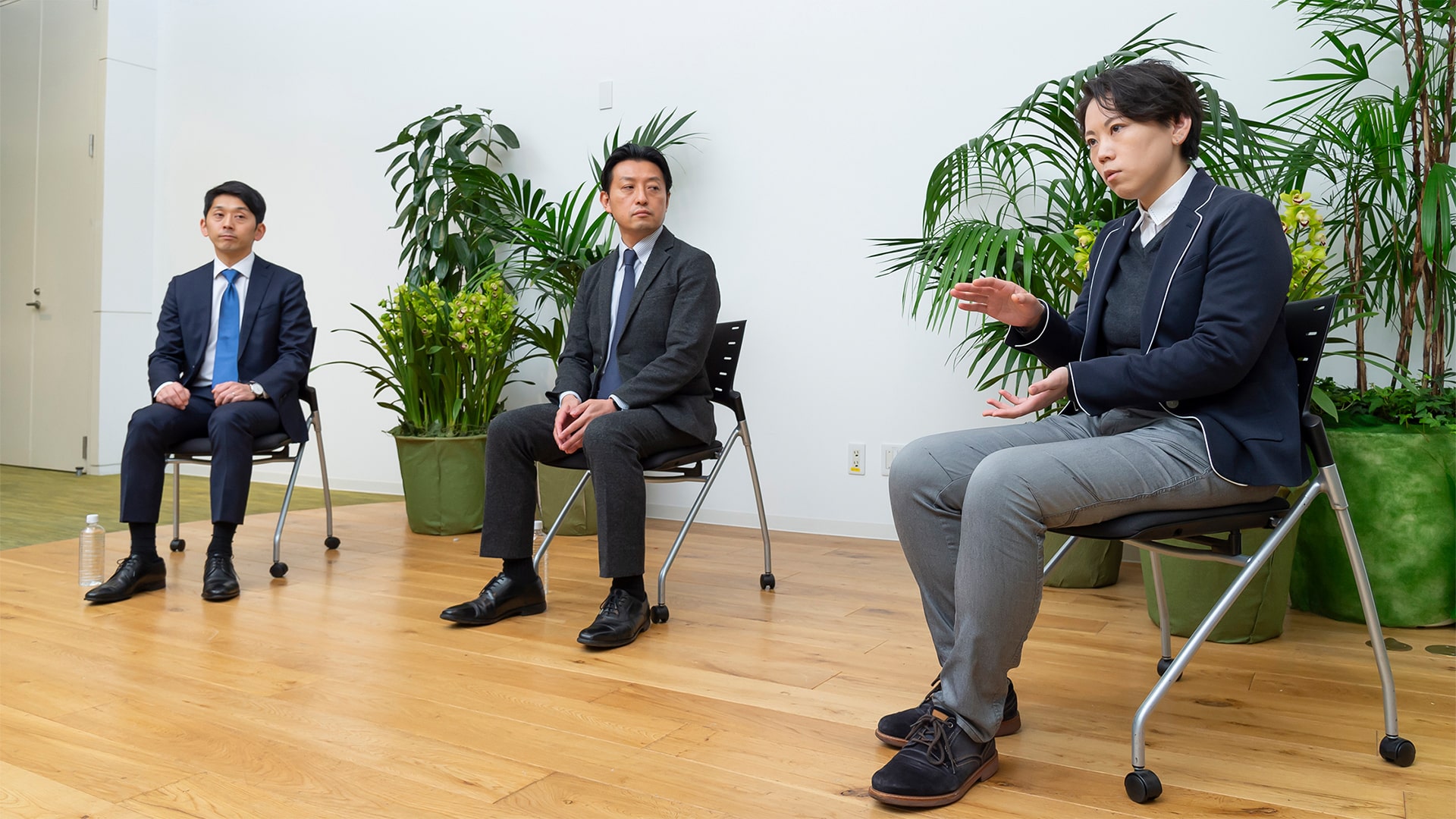
—— What do you find most inspiring and fascinating about this rice-paddy methane reduction project?
Yamashita For me, it's the fact that the farmers and everyone else involved in the project share MC's awareness of the problem posed by methane emissions, and that we all feel part of the same team, one that transcends organizational boundaries and inspires us to do our best. I also enjoy the challenge of trying to figure things out as we go. This is a constant process of trial and error, because none of us know what the right answers are yet. The significance and fascination of this project are what motivate me to go to work every day. Hiroshima Most of the businesses that I've been involved in up to now already had value chains in place, having been forged over many years of hard work. This project is different though, because we've only just gotten the forge burning and everyone involved is still groping for the tongs. But that uncertainty is precisely what drives us to have such open, encouraging discussions and try out new ideas. That's what makes this project so enjoyable for me, and the experience I'm gaining from it is invaluable. Morimoto I feel the same way as Ms. Yamashita and Mr. Hiroshima. The best part of this project is that it's a chance to do something completely new, something that no one has tried before, whether here at MC or throughout the business community at large. When I talk to people about this business and ask them to assess its future value, the answers I get back will vary greatly, but that's part of what makes it so interesting, the fact that we still don't know what the future holds in store for it. Obviously, I'm excited about working with all the project members, and I know that we'll do our best to get the best results possible.
—— I'd like to conclude by asking each of you to sum up your thoughts and aspirations with respect to the net-zero-by-2050 challenge.
Hiroshima I'd like to see technologies used to boost efficiency and efforts to scale up operations bring down the costs associated with cutting GHG emissions. We'll also need to employ effective marketing strategies if we hope to create systems that will support society-wide interests in covering those costs. As an employee at MC, I want to do my part in fulfilling those responsibilities. Yamashita Up until about a year ago, no one involved in rice distribution, myself included, had ever heard of drainage-period extensions, nor were we really aware about methane-reduction methodologies. So much has happened over the last 12 months though, and the state of rice-grower climate action is evolving at a dizzying pace. Every day, I'm reminded of just how quickly the world is changing, and indeed, just how quickly it's capable of change. That will always be in the back of my mind, as I do my part to ensure that we keep pace and achieve our 2050 goal. Morimoto I think there's still so much more we can do to realize carbon neutrality by 2050. We need to identify business domains where decarbonization is possible and address challenges preventing us from scaling up the solutions and lowering their costs, because one by one, those solutions have to be substantiated. MC's Business Incubation Unit is responsible for creating new businesses, and those of us in it remain committed to enlightening our fellow MC employees. In my view, it will be an accumulation of this kind of steady, honest effort that helps us to achieve carbon neutrality by 2050.
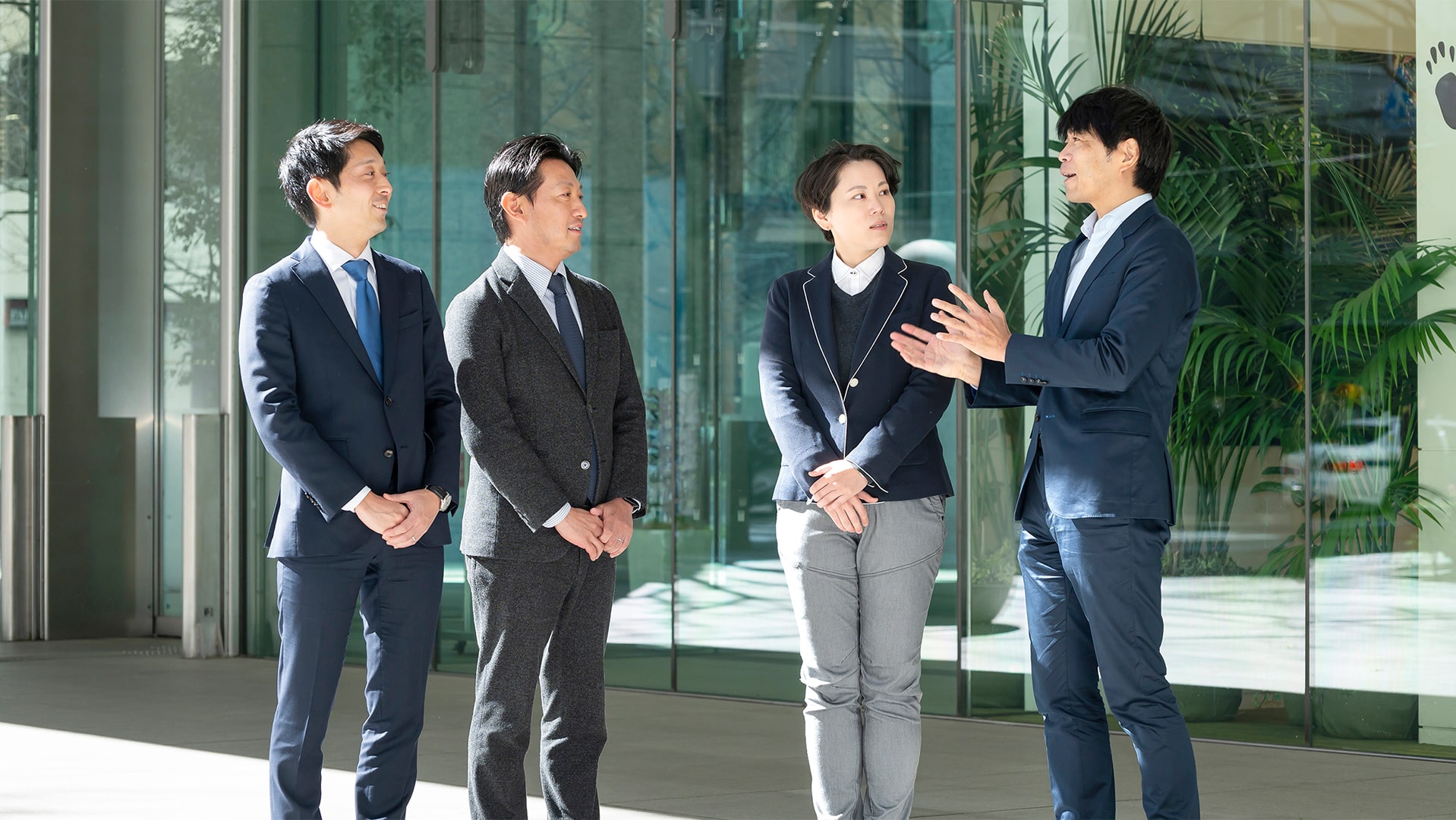
- Part 3 will feature a roundtable discussion with rice growers in Akita Prefecture.
-
Teaming with Farmers to Decarbonize vol.1
Improving Grazing Practices Regenerating Native Forests in Australia -
Teaming with Farmers to Decarbonize vol.2
Lowering Methane Emissions from Rice Production
Supporting Farmers and Decarbonization -
Teaming with Farmers to Decarbonize vol.3
Rice-paddy Methane Reduction Project Goes into Full Swing
More Growth Anticipated in Regionally Supportive, Eco-conscious Agriculture
